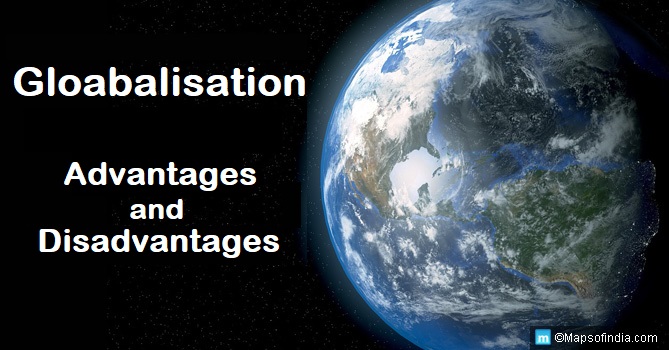Globalisation refers to integrating economy and interaction associated with social and cultural aspects with the global union comprising people, governments, and corporations. It transforms relations between respective countries as it achieves to have greater interdependence. It emphasises social, economic and geographical barriers.
There is an increased economic reliance between countries across different boards through large volume and variety of ‘cross border’ transactions in terms of goods and services and global capital flow through the latest, rapid and wide reach diffusion of technology.
India is one of the nations that triumphed considerably after the beginning and when globalisation was in effect. The contribution of foreign investment in the sectors, namely retail, corporate, and the scientific field, is most extensive.
It also had a massive impact on the social, cultural, monetary and political areas. In recent years, due to enhancement in information technology and transportation, the process of globalisation has risen. With the improved global synergies, global trade, culture and doctrine also make a significant impact.
Advantages of globalisation:
- The rise in employment: With the opportunity of special economic zones (SEZ), There is a high number of new jobs available with the vast opportunity of special economic zones (SEZ), comprising the export processing zones (EPZ) centre in India, which leads to the employment of thousands of people. In India, there is inexpensive labour, and this feature urges the significant companies in the west to outsource employees from various regions and generate more employment.
- The rise in compensation: Post globalisation, the level of compensation has risen regarding the domestic companies due to the knowledge and skill set a universal company provides. This also brings the revamp in the management structure.
- Standard of living: The Indian economy and the living standard of an individual have changed a lot with globalisation. This change happens with a person’s buying behaviour, particularly with those connected with global companies. So, numerous cities are under preparation for a better standard of living besides business development.
- Expansion of industries: It paves the way for consumer goods industries to function faster to meet the continuous demand for these consumer goods, resulting in rising employment opportunities over a particular period. This would have a trickle-down effect to lower the proportion of the population residing below the poverty line.
Disadvantages of globalisation
- Redistribution of Economic power: Globalisation facilitates redistribution of economic power globally, enabling influence by economically powerful nations over the developing countries.
- Imports and Exports: Generally, it results in more increase in imports than the increase in exports, which will have a continuing trade deficit and an issue of balance of payments.
- Agricultural threat: It gives agriculture in developing and underdeveloped countries across the globe. According to the WTO trading provisions, agricultural items markets of poor and developing countries will inundate farm goods from countries at a decreased rate than those indigenous farm commodities resulting in a death-blow to several farmers in villages.
- Low employment growth rate: Globalisation fosters the idea that technological change and increased fruitful work would lead to increased jobs and wages. However, during the last few years, such technological developments in some developing countries have resulted in more loss of jobs than they have created, enabling a fall in employment growth rates.




